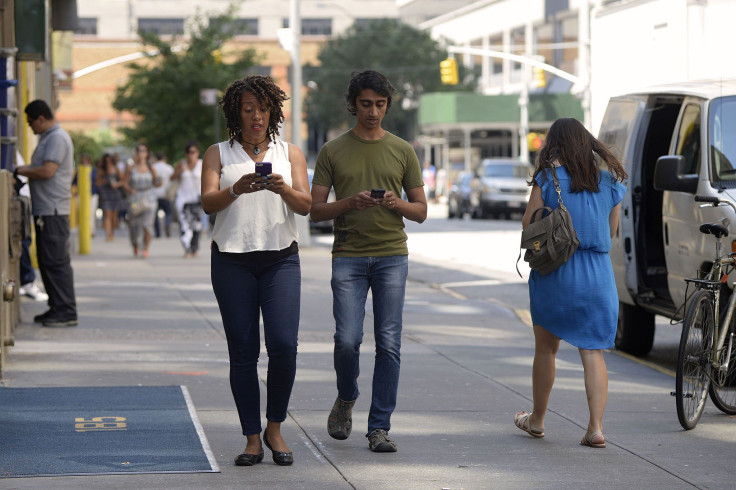Distracted Walking Remains "Serious Issue" In The US, Yet Many Americans Deny Doing It

More than three quarters of Americans believe distracted walking is a "serious issue," according to a new survey from the American Academy of Orthopaedic Surgeons (AAOS); that's 78 percent of U.S. adults (who the academy lovingly refers to as "digital deadwalkers"). Yet, 74 percent believe "other people" are usually or always walking while distracted — not them.
The AAOS found this "it's not me, it's you" mentality can be applied to a bevy of walking behaviors. For example, 90 percent of survey respondents said they see walkers talking on the phone, though 37 percent admitted to doing the same thing. Other distractions include engaging in conversation, listening to music (maybe this energy-boosting playlist), using a smartphone, and generally "zoning out." At the end of the day 31 percent said distracted walking is something they're "likely to do" and 22 percent even said it was funny.
Experts disagree.
"Today, more and more people are falling down stairs, tripping over curbs and other streetscapes and, in many instances, stepping into traffic, causing cuts, bruises, sprains, and fractures," Dr. Alan Hilibrand, chair of the AAOS Communications Cabinet, said in a statement. "In fact, the number of injuries to pedestrians using their phones has more than doubled since 2004, and surveys have shown that 60 [percent] of pedestrians are distracted by other activities while walking."
Hilibrand reported some age disparities, too: Apparently, of those injured in a distracted walking incident, women aged 55 and older are most likely to suffer serious injuries, while millennials are least likely to be injured despite reporting higher rates of walking incidents. New Yorkers are also more likely to walk distracted than walkers living in other cities. More of AAOS' findings can be seen in the infographic below.
To reduce risk of injury, the AAOS advises pedestrians to practice being safe and alert in a variety of ways. For starters, if you're listening to music, maintain a volume that allows you to still hear the sounds of traffic and your surroundings. If you have to make a phone call or send a text, stop and do so as opposed to walking and texting. And definitely avoid jaywalking, as well as stepping off or onto curbs without looking up major intersections first. Don't forget elevators and stairs.
Published by Medicaldaily.com



























